
Bizarro Back Issues: ‘Hitman vs. Vampires’ (1999)

Around this time of year, I like to get into the Halloween spirit by reading through a few spoooooky comics, and one of the stories that always makes it into the stack is a two-part story from DC's Hitman called "Dead Man's Land." Of course, I don't need much of an excuse to read Hitman. It's one of my favorite comics of all time, to the point where I consider it to be Garth Ennis's finest work, and when you consider that he was writing it at the same time as Preacher, that's saying something. Not only does it boast the incredible art of John McCrea, but it's the best example of the character work Ennis has such a gift for, and in its 60 issues, he built a cast of people readers cared about, whose triumphs and tragedies felt like they mattered on a level that most comics just never manage to reach.
And in this one, they shot a bunch of vampires. This story, from Hitman #37 and #38, is hardly the character's first brush with the supernatural. He did, after all, first appear in Ennis and McCrea's run on The Demon during DC's Bloodlines event.
This story, from Hitman #37 and #38, is hardly the character's first brush with the supernatural. He did, after all, first appear in Ennis and McCrea's run on The Demon during DC's Bloodlines event.
For those of you who don't know, the idea behind Bloodlines was to create a whole slew of fresh new characters designed for the extreme times of the '90s! As a result, the DC universe was briefly flooded by characters like Razorsharp, who managed to be an ace computer hacker despite having a sword for a hand, Loose Cannon, described by Wikipedia as "a mood ring version of the Hulk whose color changes as he gets angrier," and Nightblade, who shocked the world by being a Chinese man who was also a badass martial artist!
A few of them even got their own series out of the deal, including Gunfire, whose ability to turn anything he touched into a gun was the apotheosis of the era that gave us cable. As you might expect -- and as happened all over the next year with the titles that launched out of Zero Hour -- most of them were quickly canceled and their heroes moved into the file where they keep the guys they're allowed to blow up and/or dismember at the start of every major crossover.
And then there was Tommy Monaghan, a hired killer from a Gotham City neighborhood called the Cauldron with a slightly dubious moral code that saw him only taking contracts on bad people. Unlike the sword-hands and shuriken rollerblades that the rest of the Bloodlines crowd ended up with, Tommy was saddled with the relatively low-key powers of telepathy and X-Ray vision, and the headaches he got from using them meant that they only showed up four or five times in five years of comics. Aside from being, you know, an actual hitman, he never went by a codename, and unlike, say, Deathstroke, he wasn't a super-badass assassin. He might've spent four issues clowning Green Lantern, but in the very first issue of Hitman, Batman uppercuts him out of the panel.
Which is another interesting thing about Hitman: Despite Ennis's legendary distaste for super-heroes, Tommy Monaghan lives in Gotham City, and his stories are about as tied into the larger DC Universe as could be. So in 1999, when Gotham had been devastated by an earthquake and abandoned by the government so that Batman could have a year's worth of Max Max adventures in the No Man's Land crossover, Tommy and his pals were roped into dealing with that, too.
Of course, at the time, he had a few problems of his own to deal with.
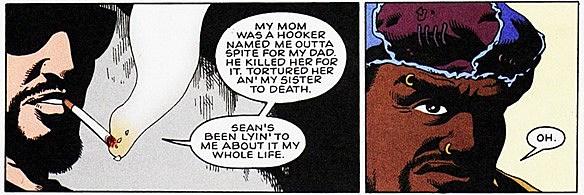
As a result, he missed out on all the excitement of the cataclysm and the subsequent evacuation. This might seem to stretch credibility pretty far, since any city -- let alone the biggest city in the country -- being walled off and abandoned to faux-apocalyptic gang wars led by a schizophrenic ventriloquist and a vigilante in a Dracula costume would be the biggest news story of all time if it happened in the real world.
But as Tommy and his fellow contract killers at Noonan's Bar -- Natt the Hat, Ringo Chen and Hacken -- discuss once Tommy finally leaves the house, this is the DC Universe...

...a place where "remember that time the sun went out for a week" is a perfectly legitimate topic of conversation. This sort of thing happens all the time.
Not everyone is quite so jaded by the constant crises as the boys at Noonan's, however, and while crime bosses and vigilantes are duking it out for the rest of Gotham, the Cauldron has its own problems. A six year-old boy has gone missing, and without any cops left in their neighborhood, his mother turns to Tommy and Natt for help. They set out to find him, but when they do...
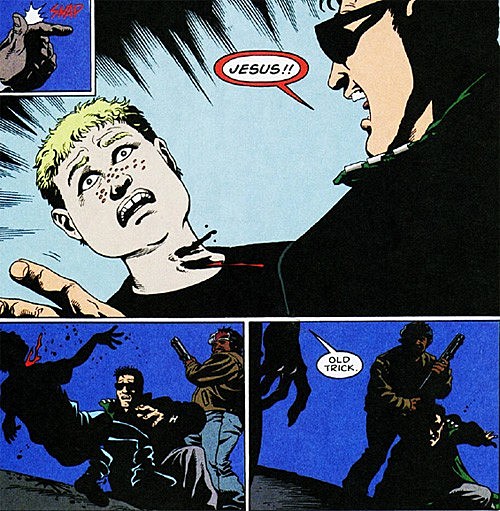
...it's just his corpse, being used as bait by a gloating, ponytailed vampire in a denim vest who takes a chest full of nine millimeter and comes back with the kind of smarmy grin you'd expect from the undead.
Unfortunately for him, Tommy and Natt also have a shotgun.

That's one of the great things about Hitman: Ennis and McCrea are able to flip the violence switch from grim and disturbing to Daffy Duck slapstick in the span of a few pages, and it always works.
Despite being separated from his limbs through a liberal application of 12 gauge, the vampire's still alive, which is why Tommy and Natt decide to hang out with ol' stumpy over here and wait for dawn, burning him into nothingness and deciding to hunt down the friends he brought to town.

Of course, as is often the case with Hitman, an ultra-badass (and beautifully drawn) moment for Tommy Monaghan doesn't last long, as he and Natt are almost run down by vampire-driven Cadillacs in the very next panel. They clear out and head to the one place they figure they'll be safe, a local church last seen in the comic when they were being hunted down by a six-armed Nazi demon who wanted a magic demon-killing rifle that Catwoman stole.
Like I said, it's an awesome comic.
Once they're in the church, though, the board and barricade the doors, only to turn around and discover that they've just locked themselves in wth the new king of the vampires and his undead entourage.
The Vampire King, Darius, spends a few pages breaking down how his vampires are completely different than regular fictional vampires -- they're not afraid of crosses, they can cross running water, and so on. This is one of those things that's always annoying when I run across it because it's usually such a complete laundry list of what a creator wants to use from a couple hundred years worth of legends, and it's worth noting that Ennis had already been down this road in Preacher with Cassidy and the Louisiana Anne Rice wannabes. Here, though, it actually serves a purpose, completely by design: Darius's lines are so unimaginably pretentious that you want to see him get shot just to shut him up.
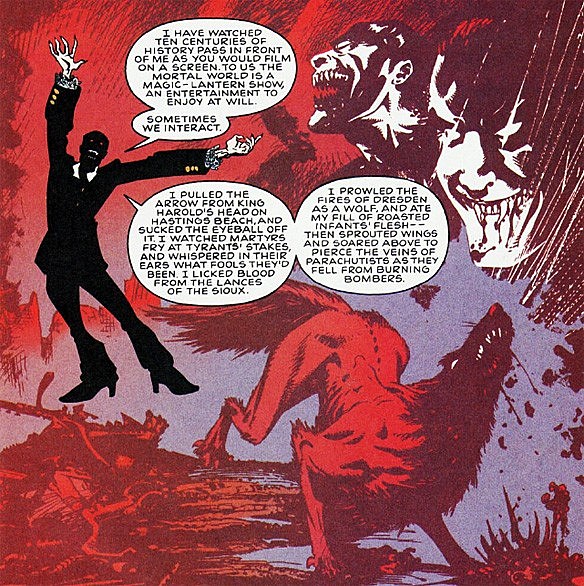
He goes on like that for a couple of pages. It turns out that he and the other vampires have decided that since he's a king, he needs a kingdom, and since the government has abandoned the Cauldron, that's where they plan to set up.
He even goes so far as to offer Natt and Tommy jobs as his daytime servants, running things and shepherding the local population -- or as Darius calls them, livestock. That goes over about as well as you might expect.
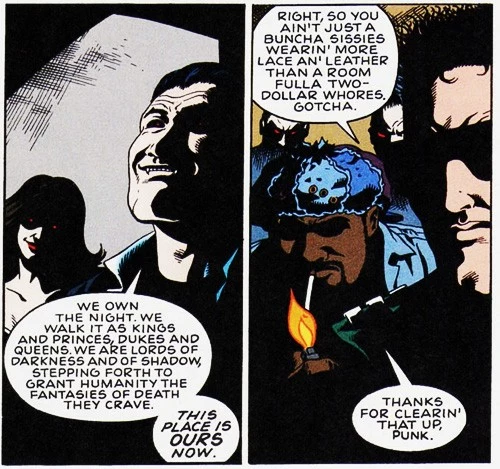
Despite all the tough talking, they're still trapped in the church with a couple dozen vampires, which is a pretty untenable situation no matter how you look at it. They're able to buy some time by using a few grenades -- they always have grenades -- to blow a hole in the roof, but as the day goes on and their circle of sunlight shrinks, their chances of survival start to dwindle.
But there's one thing they have that can defeat these horrors of the night even when their guns and grenades can't. The one thing that trumps all the mystic invulnerabilities of the undead. The one thing that can solve virtually any horror movie situation.

A cell phone.
Amazingly, even with an earthquake-ravaged city serving as the backdrop, Ennis doesn't pull out the ol' No Signal on Tommy, and before long, he's able to round up a crew who show up with, among other assorted weaponry, an M60 and a bulldozer that they use to turn the West wall of the church into a picture window.
In other words...
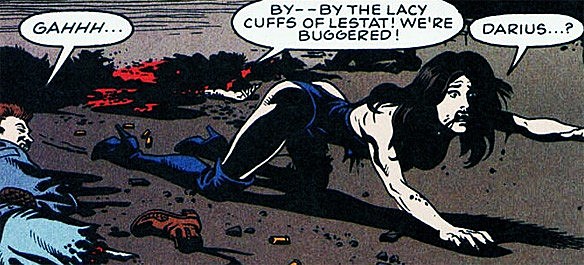
You said it, pal.
Tommy goes so far as to take the bullet-riddled skulls of the vampires and put them up on a post at the entrance to the neighborhood -- Peckinpah Street -- as a reminder to play nice. Thus, the story ends, with a moral that's pretty common in both Halloween horor stories and Ennis's work in general: A pretty solid reminder that there are far worse things out there than monsters.
More From ComicsAlliance
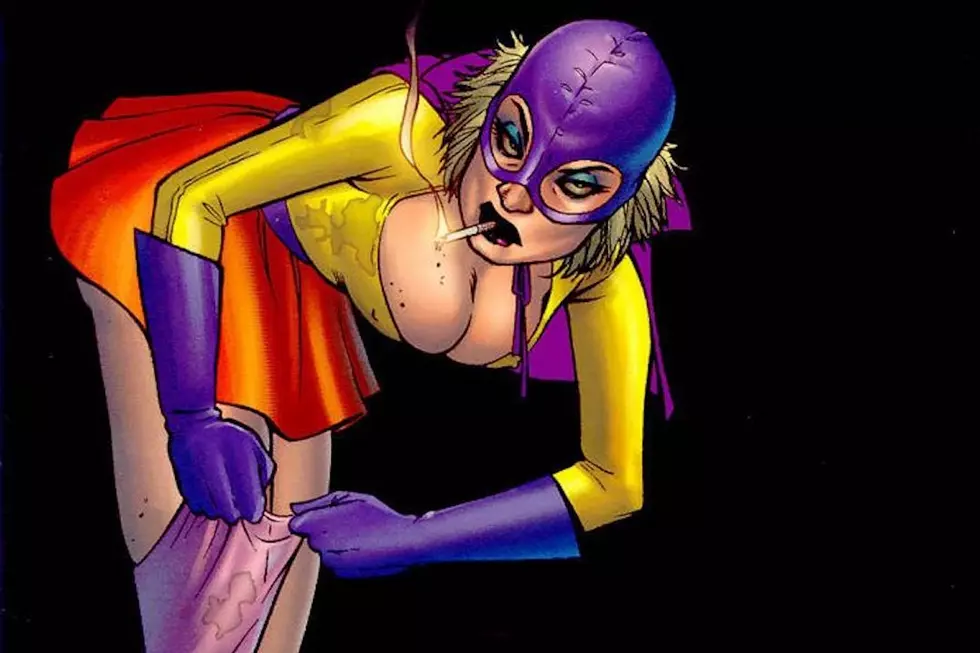

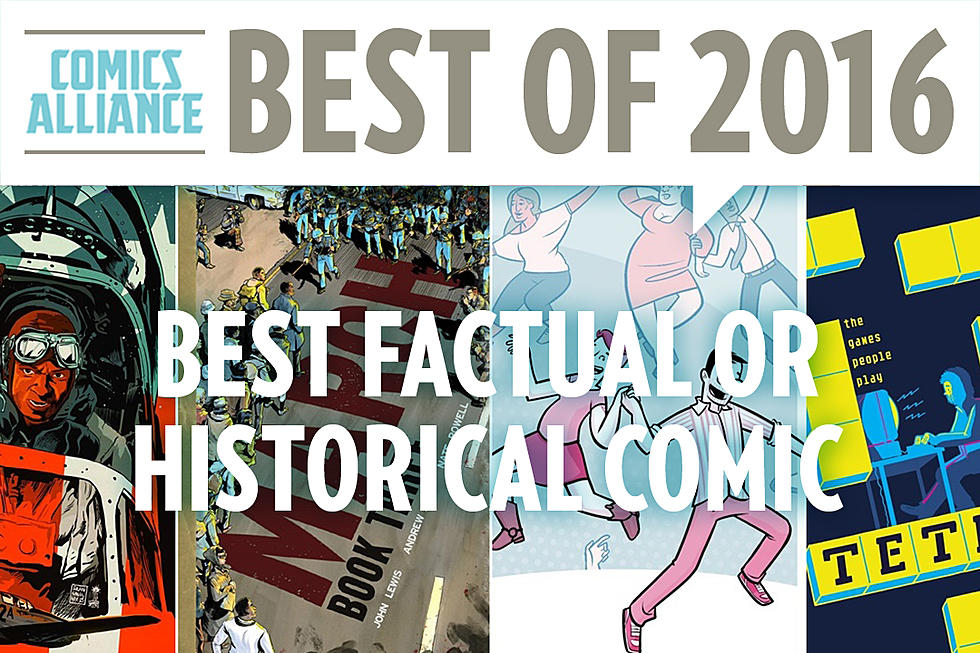
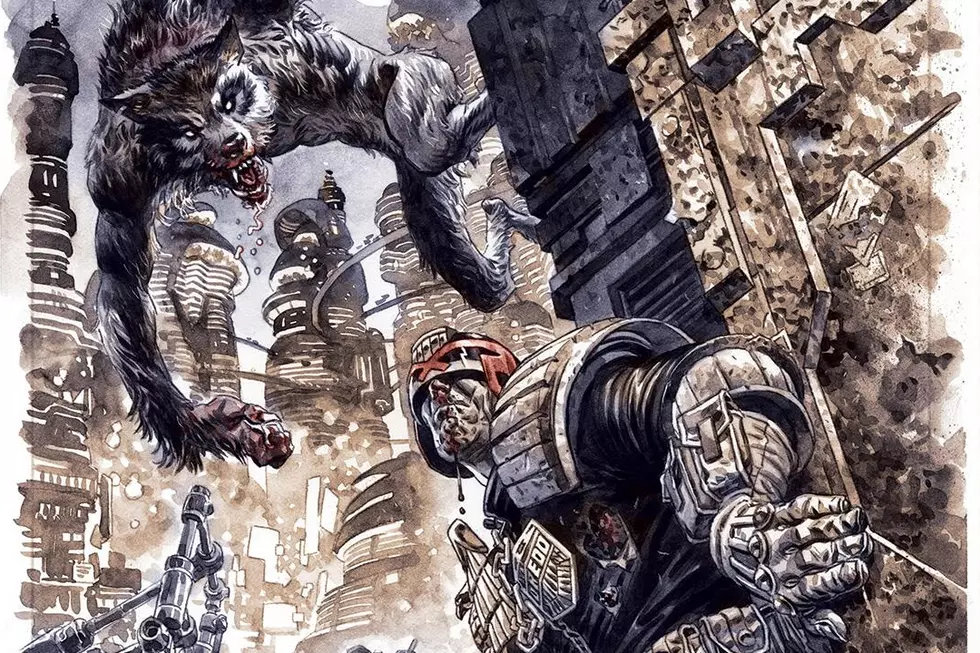




![Rogues’ Gallery: Who Is The Ultimate ‘Preacher’ Enemy? [Poll]](http://townsquare.media/site/622/files/2016/11/Preacher-Vote.jpg?w=980&q=75)
